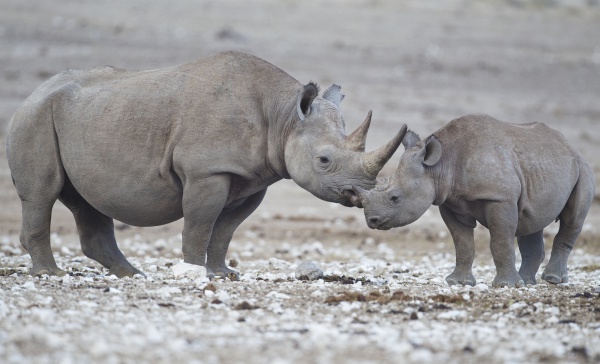Facts About Black rhinoceros
The black rhinoceros, also known as the hook-lipped rhinoceros, is a critically endangered species native to eastern and southern Africa. These remarkable creatures can vary in color from brown to grey. Carl Linnaeus first named them *Rhinoceros bicornis* in 1758, though there has been considerable debate and confusion regarding their subspecies over the years.
At one time, there were several subspecies of black rhinos. Unfortunately, some have become extinct due to excessive hunting and habitat destruction. The black rhinoceros shares a common ancestor with the white rhinoceros, diverging around four to five million years ago. Compared to the white rhino, black rhinos are smaller and possess a distinctive pointed, prehensile upper lip that aids in browsing for food.
Historically, black rhinos roamed across vast regions of Africa. Today, however, they are mostly confined to protected reserves due to habitat loss and poaching. Conservation efforts have intensified to safeguard the remaining populations, but illegal poaching for rhino horns remains a significant threat. Rhino horns have long been used in traditional Chinese medicine and as ornamental items, contributing to the sharp decline in black rhino numbers.
In terms of reproduction, black rhinos are mostly solitary but come together for mating. After a gestation period of 15 months, a single calf is born. Unlike some other animals, adult black rhinos are not particularly territorial. They exhibit unique courtship behaviors before mating, which are quite fascinating to observe. However, they face threats from habitat changes, poaching, and even competition from other species like elephants.
Conservationists are working diligently to save the black rhinoceros. Their efforts include translocating rhinos to protected areas, implementing anti-poaching measures, and running captive breeding programs. Thanks to these endeavors, the population of black rhinos has shown some signs of recovery in recent years. Nonetheless, they remain critically endangered. Some subspecies have already gone extinct, such as the western black rhinoceros declared extinct in 2011. Despite these challenges, the fight to save the black rhinoceros continues, and every effort counts in their struggle for survival.

 Kenya
Kenya